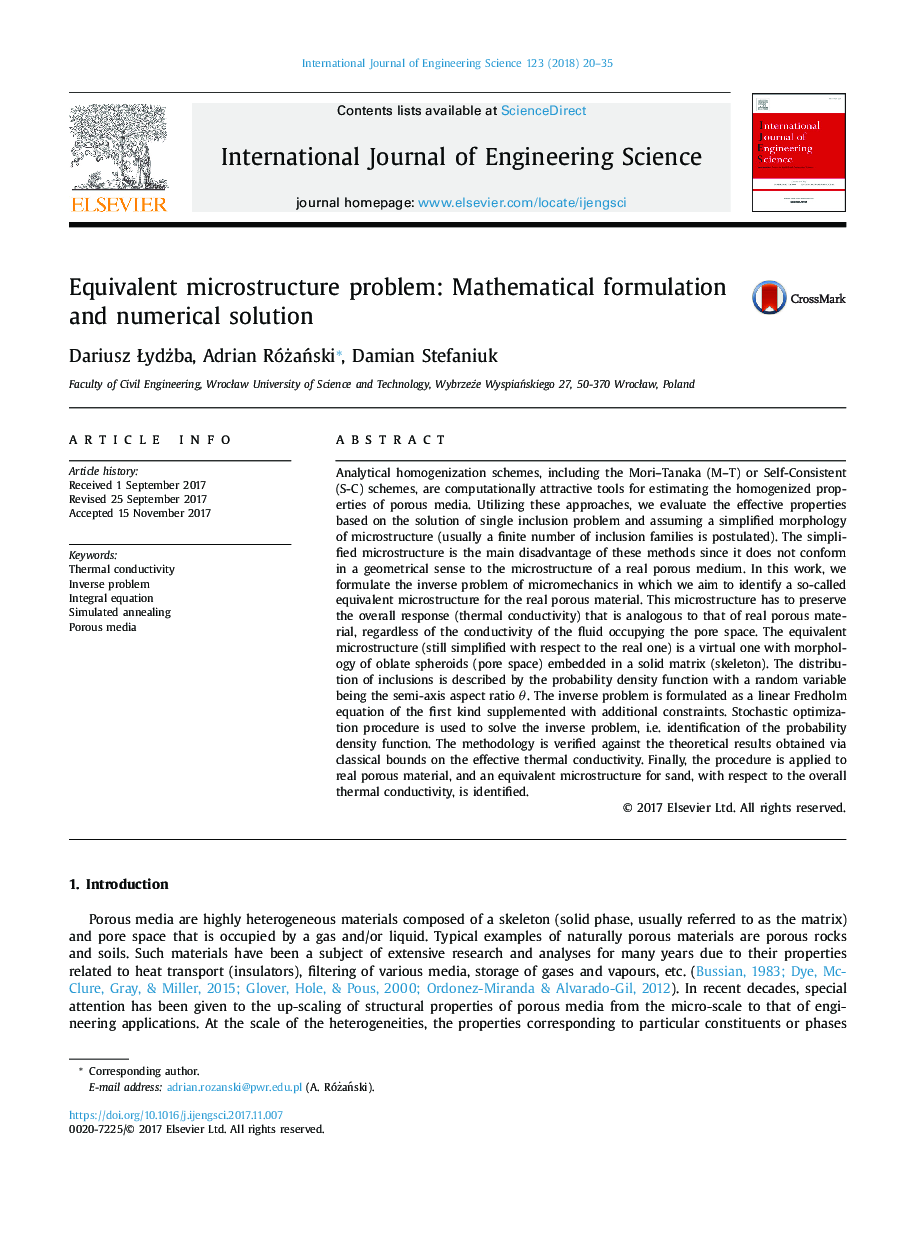| Article ID | Journal | Published Year | Pages | File Type |
|---|---|---|---|---|
| 7216309 | International Journal of Engineering Science | 2018 | 16 Pages |
Abstract
Analytical homogenization schemes, including the Mori-Tanaka (M-T) or Self-Consistent (S-C) schemes, are computationally attractive tools for estimating the homogenized properties of porous media. Utilizing these approaches, we evaluate the effective properties based on the solution of single inclusion problem and assuming a simplified morphology of microstructure (usually a finite number of inclusion families is postulated). The simplified microstructure is the main disadvantage of these methods since it does not conform in a geometrical sense to the microstructure of a real porous medium. In this work, we formulate the inverse problem of micromechanics in which we aim to identify a so-called equivalent microstructure for the real porous material. This microstructure has to preserve the overall response (thermal conductivity) that is analogous to that of real porous material, regardless of the conductivity of the fluid occupying the pore space. The equivalent microstructure (still simplified with respect to the real one) is a virtual one with morphology of oblate spheroids (pore space) embedded in a solid matrix (skeleton). The distribution of inclusions is described by the probability density function with a random variable being the semi-axis aspect ratio θ. The inverse problem is formulated as a linear Fredholm equation of the first kind supplemented with additional constraints. Stochastic optimization procedure is used to solve the inverse problem, i.e. identification of the probability density function. The methodology is verified against the theoretical results obtained via classical bounds on the effective thermal conductivity. Finally, the procedure is applied to real porous material, and an equivalent microstructure for sand, with respect to the overall thermal conductivity, is identified.
Related Topics
Physical Sciences and Engineering
Engineering
Engineering (General)
Authors
Dariusz Åydżba, Adrian RóżaÅski, Damian Stefaniuk,
